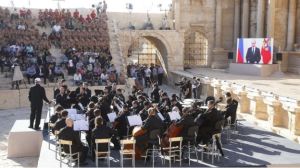Is Bashar al-Assad really the Guardian Angel of Syria’s Minorities?
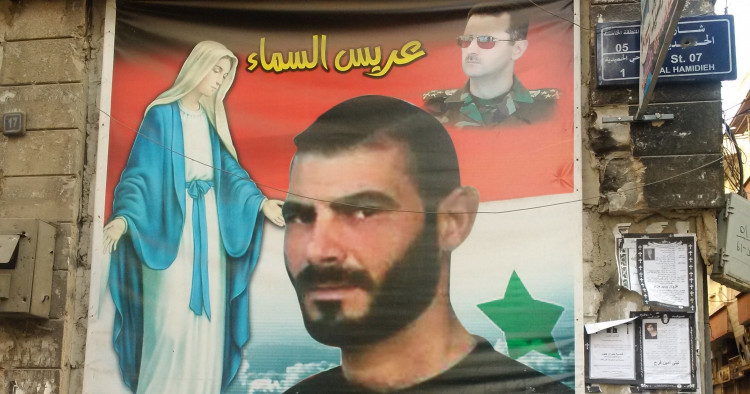
Look at the imagery in this poster plastered on a wall in bombed-out Homs. I photographed it on a visit in April 2018. Bashar al-Assad, president of Syria, sporting dark glasses and military fatigues, looking resolute and determined, appears in the heavens opposite the Virgin Mary, floating above the head of a martyred soldier. Bashar, on a par with the Virgin Mary, is presented as the guardian angel of Syria’s Christians. The message is spelled out even more clearly in war slogans liberally scrawled by regime militias on the walls of buildings everywhere, even on mosques — “There is no god but Bashar” and “Do not kneel for god, kneel for Bashar.”
Since the start of the current war, Bashar al-Assad, in power since 2000, has consistently sought to promote himself as the protector of Syria’s minorities — be they Christian, Alawi, Shi’i or Druze — from Islamist extremists. Many Western audiences have been seduced by his smart casual look and by his increasingly prominent, beautifully turned-out British wife, Asma. What has happened to minorities over the last 10 years of war and how does that compare to their treatment historically inside Syria?
Syria’s constitution is secular, but states that the president must be Muslim. When Bashar’s father, Hafez al-Assad, seized power in 1970, he was the first Alawite to become head of state. Alawites were considered by mainstream orthodox Sunni Muslims, who make up around 75% of Syria’s population, to be an heretical offshoot of Shi’a Islam, so Hafez engineered a convenient fatwa from Musa al-Sadr, a respected Shi’a cleric, declaring Alawites to be “within the fold of Islam.” Before the current war, Alawites accounted for about 10% of the population. Precise figures today are notoriously difficult to assess but most experts think the proportion may now have risen to something closer to 15%, partly because the majority of the many millions who have left Syria as refugees have been Sunni Muslims. Christians account for around 10% of the population, while Druze and Ismailis (further offshoots of Shi’a Islam) together represent about 5%.
Sectarianism and internal divisions
It is a common misperception in the West that sectarianism in the region is some ancient phenomenon rooted in age-old feuds. The Assads know this and understand only too well how to play on Western fears of Christian persecution by Muslim extremists, especially after the rise of ISIS and its public beheadings of Western Christians. But such divisions as existed between people were as likely to be found within the plethora of Christian and Muslim sects historically represented, and still present, in Syria as between the different religious communities themselves. One colorful story told to me by a Syrian dentist who grew up in a majority Orthodox Christian village in Syria’s Wadi Nasara (Valley of the Christians) described how his church felt so upstaged by a fancy new Evangelical church built with money brought in via the Allied army after World War II that the rival church was blown up! Syria’s Christians are not one homogenous group — there are many internal divisions, just as there are within Muslim and indeed Jewish groupings. The root of the problem is often economic inequality, rather than religious difference.
A striking historic example is the 1860 Damascus massacre of thousands of Christians. Covered in the European press at the time as a sectarian event, it triggered outrage and public sympathy, followed by the dispatch of French troops in what was labelled the first humanitarian intervention in defense of minorities. Yet the problem was never sectarian — it originated within the silk industry of Mount Lebanon. The Maronite Catholics were commercially closest to the French and many lived in socially-isolated grandeur, rich from the privileges awarded them by Western powers seeking to gain new markets at a time of European recession. As the Ottoman grip on its empire weakened, a feeding frenzy began in its provinces, with foreign interests competing for the spoils. The result was not only the ensuing inter-confessional violence among communities that had lived together largely peacefully up to that point, but also the complete undermining of the regional silk industry. It was gradually bought out by foreigners, mainly French Catholics, leading more and more locals to lose their livelihoods.
In Damascus the predominantly Catholic wealthy quarter in the Old City was burnt and looted by a mix of impoverished Druze and Bedouin, while many indigenous Orthodox Christians who lived in poverty-stricken Midan outside the walls to the south were spared and protected by their Muslim neighbors. The same resentments based on privilege and inequalities are building in today’s Syria, as churches in Homs and Aleppo are rebuilt and refurbished while the vast Sunni suburbs and their local mosques remain flattened. Only the flagship Aleppo Umayyad mosque and the Homs Khaled ibn al-Waleed mosque are being rebuilt for show, as empty shells.
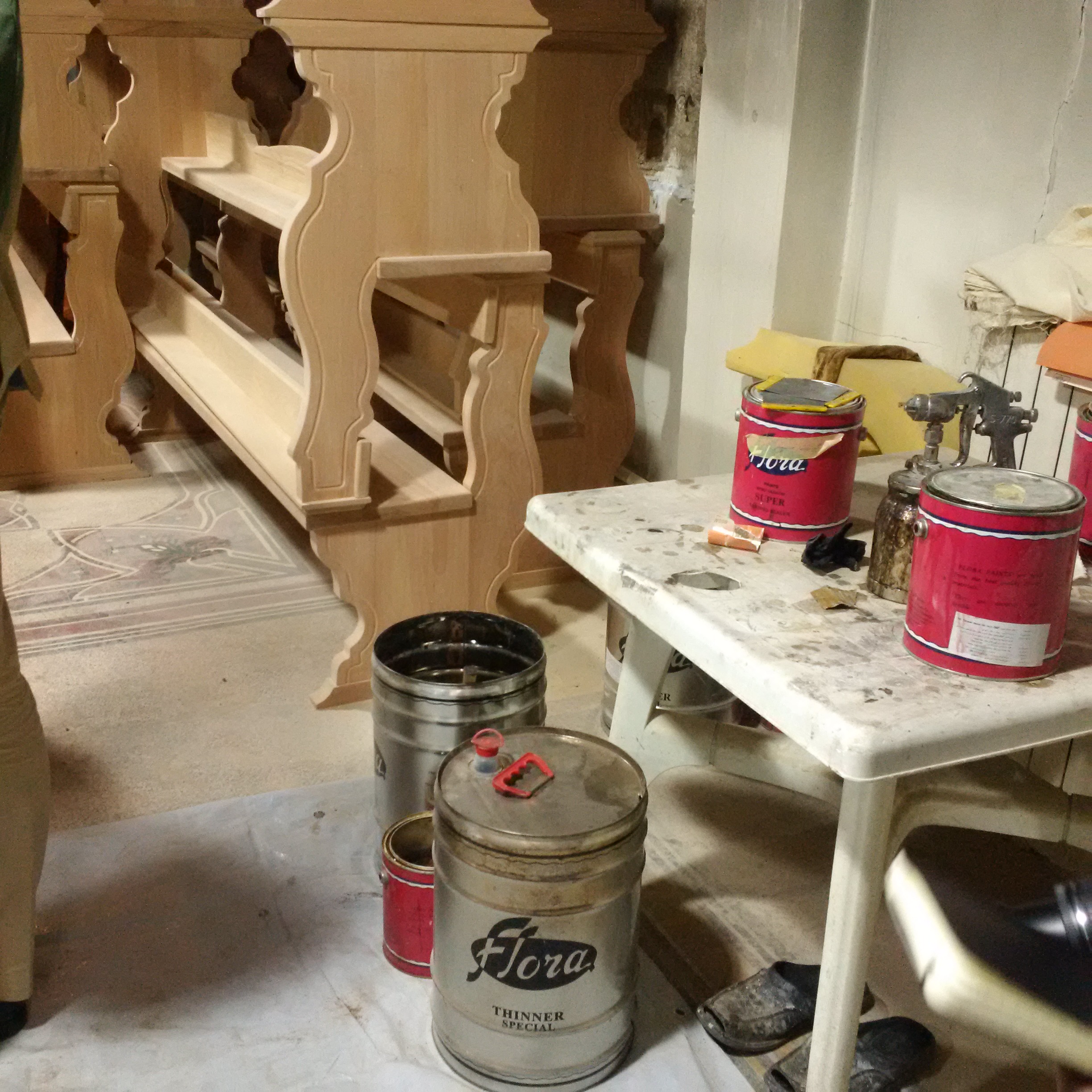
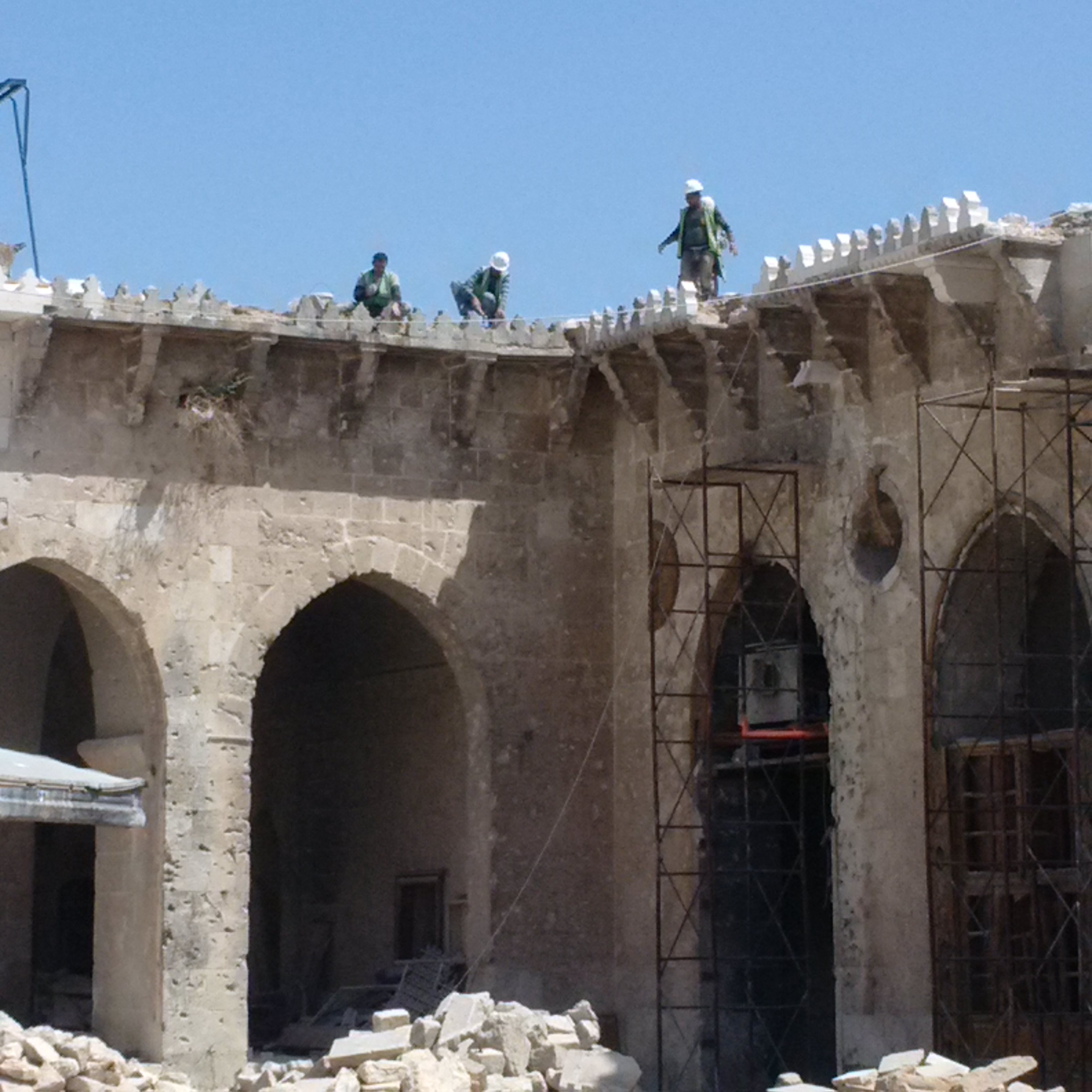
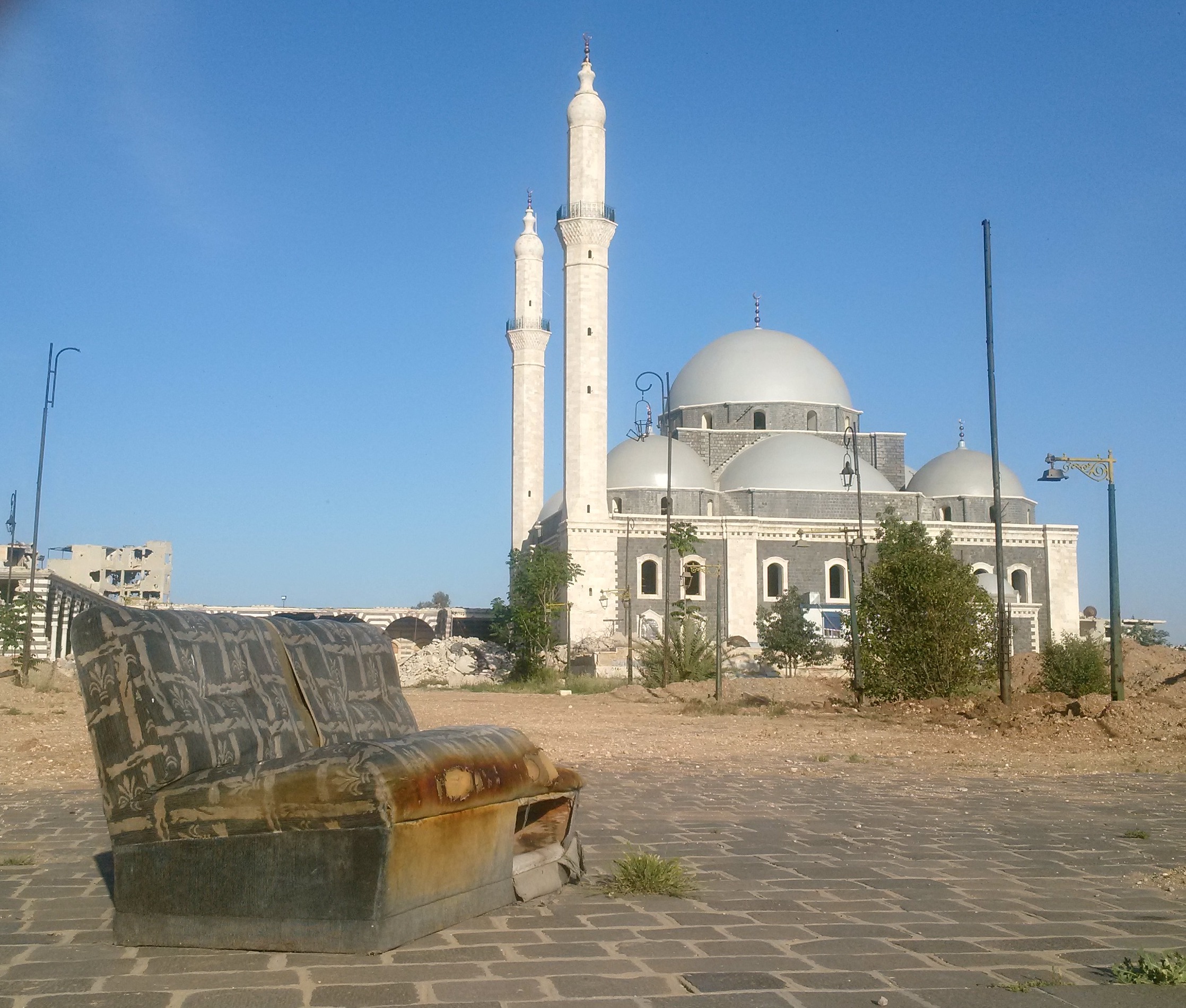
The 1860 war, like the war that rages today in Syria, was often mislabeled a civil war. Episodes of persecution were frequently misread by Europeans as sectarian, rather than economic, in nature.
But as with the current war, it only exacerbated the root cause of the grievances, deepening foreign interference. In the wake of French troops educational and philanthropic agencies began to arrive, often run by Catholic missionaries, founding orphanages, boarding schools, and dispensaries in which their own religion was privileged.
Engineering demographic change
Once the French took over Syria after World War I under their mandate, they continued their “divide and rule” methods by creating separate statelets, including for the Alawis and the Druze. But their attempts were resisted in the Great Revolt of 1925, which began in the southern Druze region. The Syrian people showed their innate pluralism by refusing to identify themselves by sect. Not until after the Ba’athist coup in 1963 did sectarian sentiment in Syria begin in earnest, when the sense of exclusion felt by many Sunnis led to the first real appearance of Sunni Islamist militancy in the 1980s, the trigger for the Muslim Brotherhood Hama massacre led by Bashar’s uncle, Rifaat al-Assad.
From 2012 onward “starve or surrender/reconciliation” deals were imposed on populations perceived to be disloyal. The first such deal was in Homs, where opponents of the Assad government were transported out in the famous “green buses” to the rebellious Idlib Province, whose population has now swelled to bursting with more and more displaced rebels, overwhelmingly Sunni Muslims. By late 2016, after half the Syrian population had been displaced and Syrian citizenship had been granted to tens of thousands of Iranian mercenaries who had fought to keep him in power, Bashar boasted to an American interviewer that “the social fabric is much better than before.”
Demographic change continues to be engineered or precipitated in today’s war, as it has been throughout Syria’s history. Centuries ago Sayf al-Dawla, founder of the Hamdanid dynasty, relocated the entire Shi’a population of Harran (in today’s Turkey) to repopulate his capital Aleppo after it had been ravaged by a Byzantine attack. After the end of the Crimean War, the Russians, needing to create a Christian majority, brought in Christians and by 1865 had pushed over half a million Muslims out into the Ottoman heartlands. In 1939 the French separated the Sanjak of Alexandretta from Syria and ceded it to Turkey, triggering the exodus of thousands of Armenians and Arabic-speaking Alawi, Sunni, and Christian refugees into northern Syria. In 1967 after capturing the Golan Heights in the Six Day War, Israel began almost immediately to settle Israeli Jews there, before illegally annexing the territory in 1981. Israeli maps show it as Israeli territory, not as Syrian territory occupied by Israel. Official Syrian maps continue to show both the Golan and the Sanjak of Alexandretta (renamed Hatay by Turkey) as part of Syria. Future maps of Syria will no doubt vary depending on who publishes them.
The ultimate irony is that within so-called secular Syria as represented by the nominally secular Ba’ath Party, in power under the Assads for the last 50 years, sectarianism has been consistently on the rise. The mentality has been you have either been a Ba’athist or not. You are either with us or against us. Loyal Ba’athists have been protected, be they Sunni, Alawi, Christian or whatever. Those perceived as disloyal to the Ba’athist Party have been punished, either through imprisonment, detention or torture.
Before the Assads, religious identities were pluralistic, and were only relevant at the social level. They were not politicized or institutionalized. The Assad legacy is to have turned Syria into a sectarian society for its own ends, following the French mandate model, setting community against community. But once Assad and his dynasty are gone, the Muslim-majority Syrian society will, in time, revert to its natural state of tolerance and co-existence with religious minorities, given the chance. It is the default position of every Syrian I know. All of them mourn the current triumph of Assad’s mock-secular sectarianism and pray collectively for its speedy passing.
***
This article first appeared on 12 April 2021 as part of a series written for MEI, the Middle East Institute based in Washington DC, where I am a non-resident scholar on their Syria Program:
https://www.mei.edu/publications/bashar-al-assad-really-guardian-angel-syrias-minorities









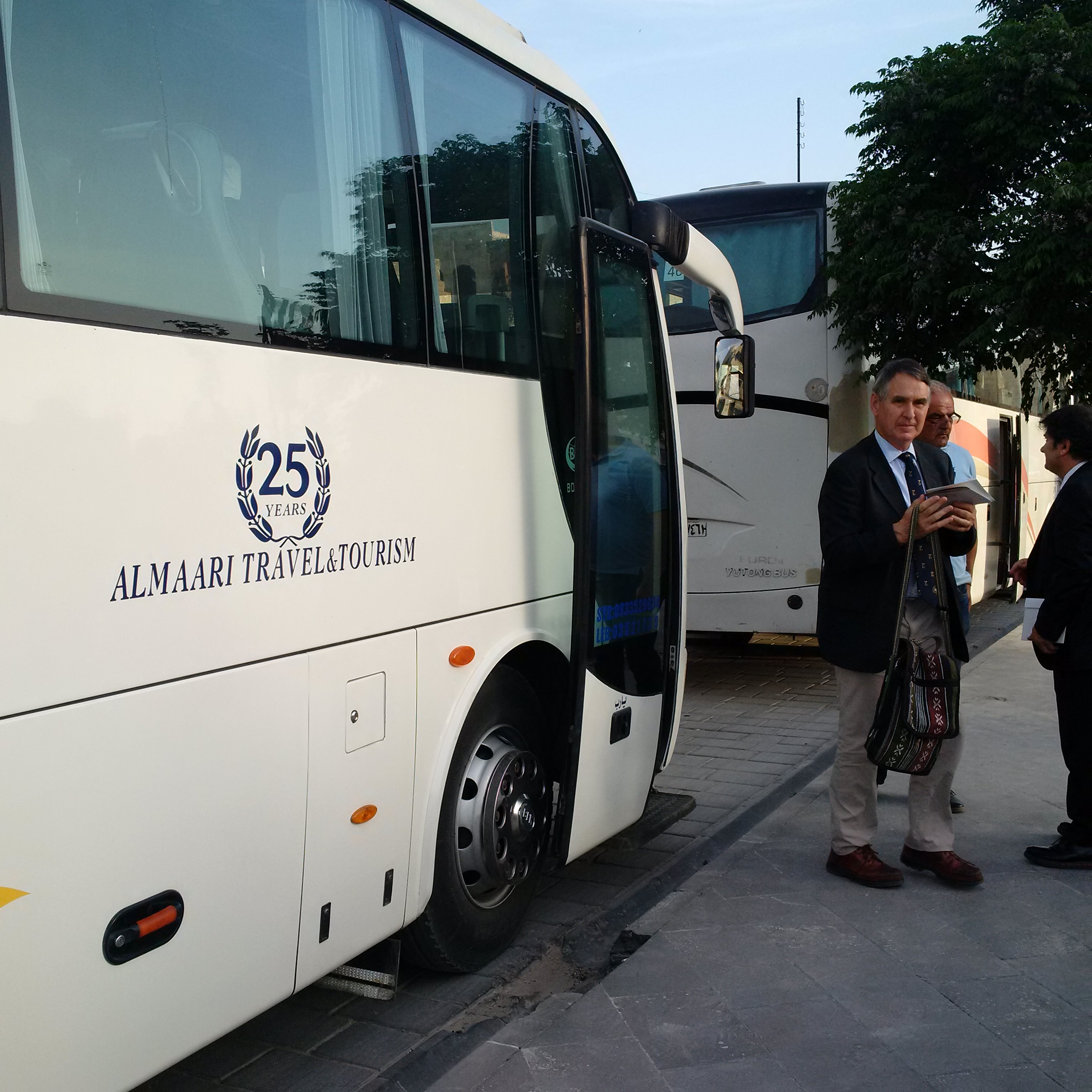

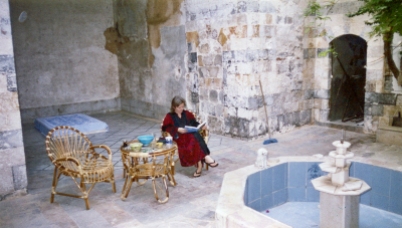


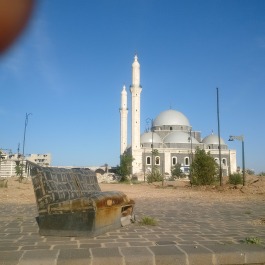



















 Today the Syrian regime of Bashar al-Assad completed its stranglehold on Aleppo. Its forces cut off and sandbagged the Castello Road, the last road north via which rebel fighters and residents of east Aleppo could escape from the city. Weeks of relentless aerial bombardment by Syrian and Russian planes, aided on the ground by Hezbollah fighters and Iranian militias have led up to this point. Hospitals and schools have been savagely targeted. The final chapter of the war has begun. Many Syrians see it as the beginning of the end.
Today the Syrian regime of Bashar al-Assad completed its stranglehold on Aleppo. Its forces cut off and sandbagged the Castello Road, the last road north via which rebel fighters and residents of east Aleppo could escape from the city. Weeks of relentless aerial bombardment by Syrian and Russian planes, aided on the ground by Hezbollah fighters and Iranian militias have led up to this point. Hospitals and schools have been savagely targeted. The final chapter of the war has begun. Many Syrians see it as the beginning of the end.


